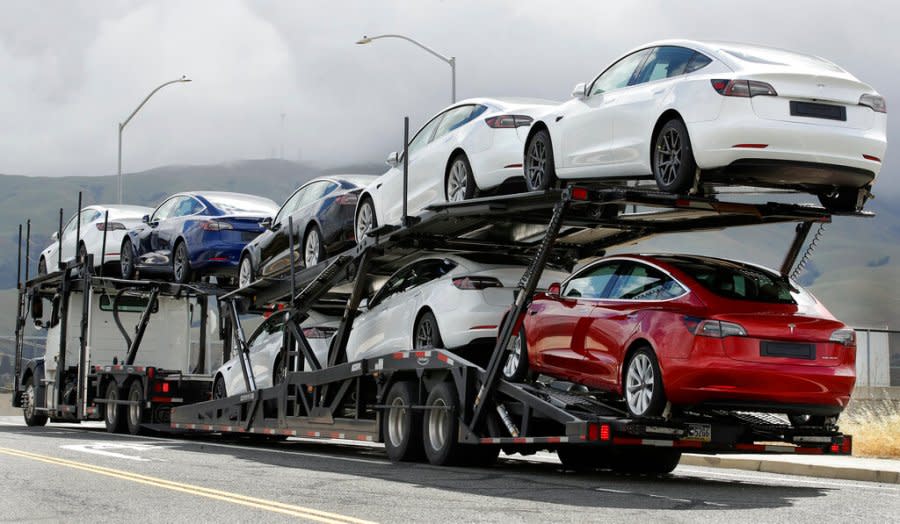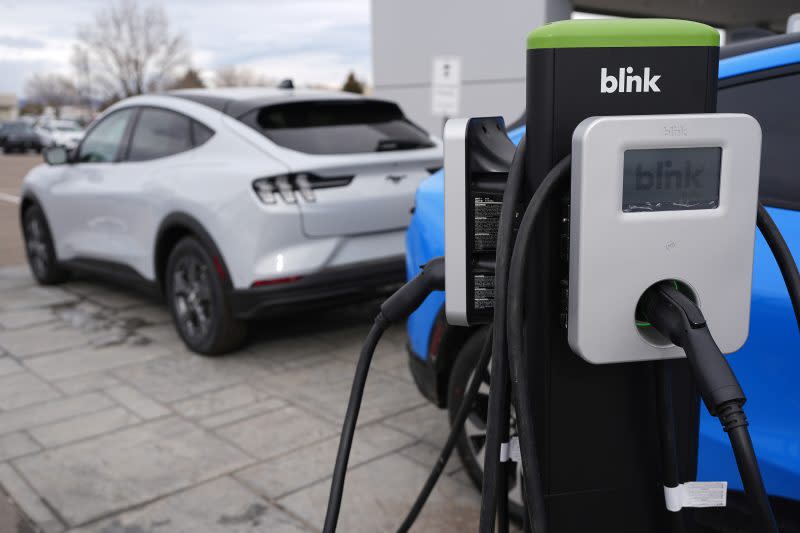Why are used EV prices cratering right now? It’s complicated

The adoption of electric vehicles in the United States has hit a pothole.
While the overall percentage of EVs on the road continues to climb — sales reached a record of 7.6% of the U.S. vehicle market in 2023 — resale values are going in the opposite direction.
“Prices for used EVs have been falling in recent months, especially compared to what we saw just a year or so ago when not only were used EV prices high, but some vehicles were also selling for close to new prices or even more,” says KTLA 5 technology reporter Rich DeMuro.
In 2023, prices for the top 10 best-selling battery cars in the U.S. fell an average of 28%, according to data from CarGurus compiled by HSBC.
On the surface, this might seem like good news for those waiting for the right moment to purchase their first electric vehicle. Unfortunately, this sharp decline in resale value points to several problems inherent to EVs that can’t be overcome in the short term.
Hertz is selling EVs, including Teslas, to buy gasoline models
Tesla, DeMuro points out, is no longer the only major player in the EV market. There are more options now than ever, and government incentives favor those who buy new, not used vehicles.
A more significant factor, experts say, boils down to longevity.
“Consumers are concerned about battery life,” says DeMuro. “They worry that the battery might be degraded on a used EV and, right now, there isn’t a standard way to know if that’s the case.”
Like all rechargeable batteries, the lithium-ion batteries that power EVs degrade at an average rate of 2.3% per year, according to EV Connect.
Since battery cars are still relatively new, data on long-term reliability and battery life is not yet conclusive, and factors, including how often a car is fast-charged, can play a role.
This degradation means that over time, the electric vehicle’s range will decrease in a way that most internal combustion cars won’t. Sure, a gas-guzzler’s fuel efficiency may slip with age. But if your engine is well-maintained, some ICE cars can keep rolling well past 200,000 or even 300,000 miles on the odometer.
EV batteries may prove to have that kind of longevity, but the range issue is irreversible.
“For what it’s worth, most modern EVs are designed to do things right to ensure that your car never behaves like a two-year-old smartphone,” writes Joe Wiesenfelder with Cars.com. “But it’s inevitable that a battery’s capacity will diminish over time. Anyone considering one of these cars and determining how much range they will need should know and account for this.”
In early January, Hertz dropped a bomb on the electric vehicle market when it announced plans to sell 20,000 EVs, mainly Teslas, and replace them with gas-powered cars, citing expenses related to collisions, damage, and weak demand. The rental car giant had originally committed to converting 25% of its fleet to electric.
Hertz’s used car site shows Tesla Model 3s now selling for as little as $20,000.
Now, Hertz appears also to be hitting the pause button on its deal to purchase 65,000 battery cars from Polestar.
None of this suggests that electric vehicle adoption in the U.S. is failing. As noted earlier, market share continues to climb.
California plans to require all new vehicles sold in the state to be electric or plug-in hybrids by 2035. The plan, approved by the California Air Resources Board in 2022, is currently being reviewed by the Environmental Protection Agency (EPA).
“California continues to drive EV adoption, and it doesn’t seem like that will slow down anytime soon,” DeMuro says. “There is still a huge interest in EVs overall, but that doesn’t mean consumers are ready to buy one right now.”
For the latest news, weather, sports, and streaming video, head to KTLA.


